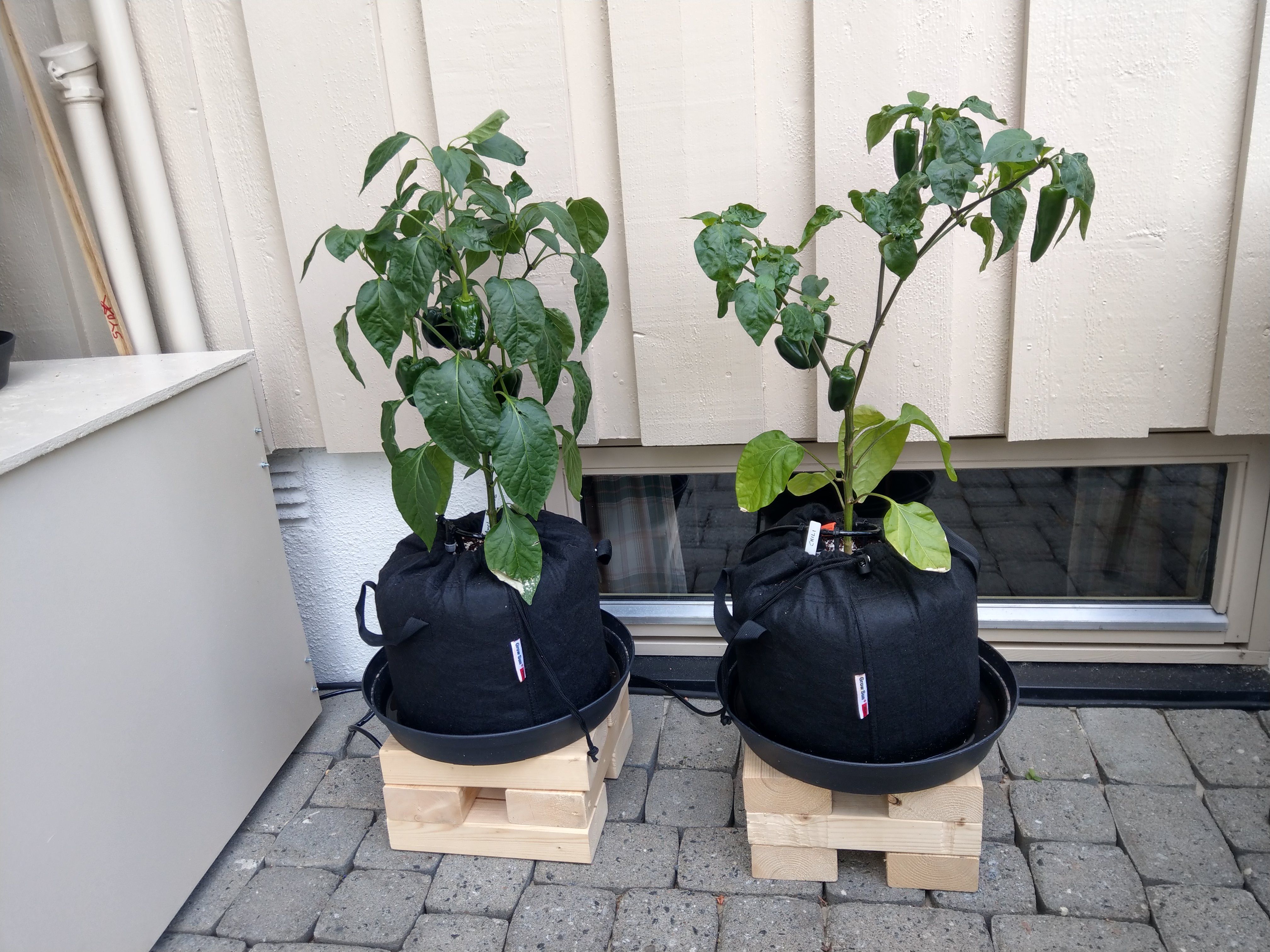Hello!
I just registered on this forum, but I have been lurking for a while. This time my lurking have not been able to find a solution to my problem, so I sincerely hope one of the knowledgeable members here can help me out!
I'm currently growing a pink habanero from fataliiseeds (It's supposed to be extremely low in heat, but rich in taste) in the basement, under artificial LED/COB lights, in coco coir drip fed 3 times each week. (It started out in DWC but I made the transplant to coco a bit over a month ago)
Recently I started noticing brown spots on some of the pods, maybe it has been 5-10 affected pods total, from maybe 50 total pods on the plant.
No mature pods yet, I saw the first pod forming 6 weeks ago, but it probably shocked the plant a fair bit with the transplant to coco and all, so I'd wager it delayed ripening somewhat.
Unfortunately there have been too many pods for me to able to know when these spots occur, if they are forming on new or almost mature pods for example.
I did notice some black spots on the plant leaves when it was very young, right after feeding them some "beneficial bacteria" from the Advanced Nutrients company (I have since stopped using products from them), but nowadays there's only the occasional spots on a leaf here and there, nothing I'd have worried about if I didn't see these spots on the pods themselves in addition.
Until now I have just tossed the affected pods directly, but since I brought some pods to work I will try to keep them isolated here for a while and see what happens to them over time.
Also I didn't try to study any pods where I can't see any problems with my bare eyes, but I will bring one to work tomorrow and check for microscopic spots
What I can provide is a lot of pictures, I was even able to take a few photos with my cell phone through the microscope at work today, so I hope that is enough to give me an answer to what my problem is
I fear that they are bacterial spots and that I have to toss the entire plant, but one can always hope I guess
I'm not sure if it works very well to attach photos directly here on the forum, so I made an album on imgur: https://imgur.com/a/xGZxph7
I appreciate any input, and thanks in advance!
I just registered on this forum, but I have been lurking for a while. This time my lurking have not been able to find a solution to my problem, so I sincerely hope one of the knowledgeable members here can help me out!
I'm currently growing a pink habanero from fataliiseeds (It's supposed to be extremely low in heat, but rich in taste) in the basement, under artificial LED/COB lights, in coco coir drip fed 3 times each week. (It started out in DWC but I made the transplant to coco a bit over a month ago)
Recently I started noticing brown spots on some of the pods, maybe it has been 5-10 affected pods total, from maybe 50 total pods on the plant.
No mature pods yet, I saw the first pod forming 6 weeks ago, but it probably shocked the plant a fair bit with the transplant to coco and all, so I'd wager it delayed ripening somewhat.
Unfortunately there have been too many pods for me to able to know when these spots occur, if they are forming on new or almost mature pods for example.
I did notice some black spots on the plant leaves when it was very young, right after feeding them some "beneficial bacteria" from the Advanced Nutrients company (I have since stopped using products from them), but nowadays there's only the occasional spots on a leaf here and there, nothing I'd have worried about if I didn't see these spots on the pods themselves in addition.
Until now I have just tossed the affected pods directly, but since I brought some pods to work I will try to keep them isolated here for a while and see what happens to them over time.
Also I didn't try to study any pods where I can't see any problems with my bare eyes, but I will bring one to work tomorrow and check for microscopic spots
What I can provide is a lot of pictures, I was even able to take a few photos with my cell phone through the microscope at work today, so I hope that is enough to give me an answer to what my problem is

I fear that they are bacterial spots and that I have to toss the entire plant, but one can always hope I guess

I'm not sure if it works very well to attach photos directly here on the forum, so I made an album on imgur: https://imgur.com/a/xGZxph7
I appreciate any input, and thanks in advance!
Attachments
-
 IMAG2828.jpg41 KB · Views: 171
IMAG2828.jpg41 KB · Views: 171 -
 IMAG2835.jpg55.8 KB · Views: 145
IMAG2835.jpg55.8 KB · Views: 145 -
 IMAG2833.jpg49.5 KB · Views: 144
IMAG2833.jpg49.5 KB · Views: 144 -
 IMAG2668.jpg118.7 KB · Views: 151
IMAG2668.jpg118.7 KB · Views: 151 -
 IMAG2838.jpg46.3 KB · Views: 174
IMAG2838.jpg46.3 KB · Views: 174 -
 ung pink haba.JPG113.7 KB · Views: 141
ung pink haba.JPG113.7 KB · Views: 141 -
 IMAG2836.jpg56.2 KB · Views: 146
IMAG2836.jpg56.2 KB · Views: 146 -
 IMAG2826.jpg56.5 KB · Views: 153
IMAG2826.jpg56.5 KB · Views: 153 -
 IMAG2822.jpg48 KB · Views: 156
IMAG2822.jpg48 KB · Views: 156




